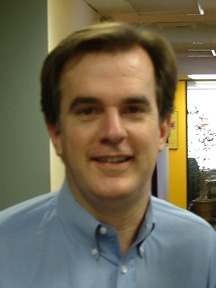PRSA International Conference is in less than one month! The event kicks off Saturday, November 7, and we want you to know that in the midst of advanced sessions there are several programs designed with New Pros in mind!
Ron Culp is Partner and Managing Director at Ketchum, and on Tuesday, November 10, at Conference he’ll present at the New Pros sponsored session, “View From the Top: How Young Talent Can Stand Out”. Ron’s experience in communications spans journalism, media relations, corporate communications, government affairs, and agency management. His session at Conference will discuss
How do you keep your boss informed of your successes (without being obnoxious)? How do you get help from management in reaching your goals? Learn what senior leaders of the public relations profession recommend in order for young practitioners to succeed. Get recommendations from top agency and corporate leaders, and hear from young professionals who are progressing well in their public relations careers.
We caught up with Mr. Culp for some good ole Q&A, and here it is! (We’ll post a list with more Conference events for New Pros on our LinkedIN and Facebook pages too, so check them out.)
1. One idea you’ll address at the session is “How to keep your boss informed of successes without being obnoxious”. How do new and young professionals miss opportunities to gain recognition for their success?
Young professionals, especially at the entry level, walk a fine line between looking too ambitious and not appearing appropriately engaged. The pace of most workplaces doesn’t foster many opportunities for feedback at the moment work is performed. Sometimes a superficial “thank you” is all that anyone receives. After doing what they consider to be a good job on a major project, it is entirely appropriate to ask for feedback. In so doing, point out key findings that surfaced in the assignment and ask for the boss’ point of view. Don’t do all the talking in an effort to impress. We have a saying in the agency: “When you’re talking, the client is judging; when they are talking, they’re buying.”
2. Another topic of discussion will be How to get help from management to reach goals. Do you think New Pros have a tendency to avoid engaging management to help them achieve their goals more so than do more seasoned pros?
Trust in and from your boss must be established before any attempt to become engaged in career goals discussion. I have found that most bosses that I trust and admired would start the conversation, not the other way around. Premature career goal discussions can send the wrong signals, especially if you haven’t established a track record of successfully completing a number of assignments. I normally recommend waiting for a year before such discussions. By then, you should have received some positive signals that provide signals that your boss is actively interested in your long-term success.
3. What information are you most excited about sharing during the event?
Former PRSSA national chair Kevin Saghy and I have interviewed nearly two dozen individuals to gain their perspectives on how young talent can stand out in corporate and agency PR jobs. I’m eager to share the points of view from 12 seasoned PR executives who run significant PR operations, and Kevin will compare their responses with feedback from a dozen of his Millennial colleagues who are now in the early stages of their careers.
5. How can NPs get the most out of their experience at International Conference?
Network. Network. Network. You’re already ahead of the game of most of your peers by simply attending this conference. Treat every person you meet with equal enthusiasm and interest. I promise that someone you met here will emerge later in your professional life as a potential colleague, mentor, reference or boss.

 Next week, on Wednesday, September 30, Mary Beth West will be telling new PR pros how to generate opportunity and avoid common mistakes in the teleseminar,
Next week, on Wednesday, September 30, Mary Beth West will be telling new PR pros how to generate opportunity and avoid common mistakes in the teleseminar, 